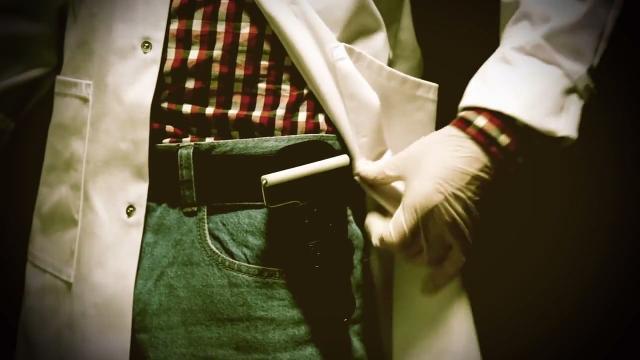Search Thermo Fisher Scientific
The iBlot® Dry Blotting Comparison to Semi-Dry and Wet

ウェスタンブロッティング実験の成功は、ゲルからメンブレンへのタンパク質転写効率にかかっています。実験結果の正確さは、ウェスタンブロッティングに使用する転写方法の効率と確実性で決まります。従来のウェット式転写は高い効率で行えますが、費用と時間がかかります。便利で時間も節約できるためセミドライ式転写に切り替えた研究者もいますが、この方法では多くの場合、転写効率が低下します。これらの方法はともに広く使用されていますが、どちらの方法も、サーモフィッシャーサイエンティフィックのiBlotドライブロッティングシステムのように高い転写効率と時間の節約、簡便性を同時に実現することはできません。
3つの電気泳動転写装置の比較
iBlotドライブロッティングシステムを従来のセミドライ式転写システムおよびウェット式転写システムと比較しました。その結果、iBlotドライブロッティングシステムは、セミドライ式やウェット式の転写システムに比べ検出感度(すなわち、転写効率)が高いことが証明されました(図1および2)。さらに、iBlotドライブロッティングシステムは他のブロッティング法に比べ時間がかからず高い効率が得られます(表1)。

図1. iBlotドライブロッティングシステムを使用することで、高い効率で転写が可能。(A)ニトロセルロースへのiBlotドライ転写と、B)ニトロセルロースへのセミドライ式転写。NuPAGE™ Novex™ 12% Bis-Trisミニゲル。レーン1~6:0.0625 µg、0.125 µg、0.25 µg、0.5 µg、1.0 µg、2.0 µg SW480ヒト結腸癌細胞ライセート。レーン7および12:5 µL SeeBlue™ Plus2タンパク質分子量マーカー、レーン8~11:0.5 µL、1.0 µL、2.0 µL、4.0 µL MagicMark™ XPウェスタン用タンパク質分子量マーカー。

図2. iBlotドライブロッティングシステムを使用することで、高品質な転写が実現。 (A)ニトロセルロースへのiBlotドライ転写と、(B)ニトロセルロースへのウェット(タンク)式転写。NuPAGE Novex 12% Bis-Trisミニゲル。レーン2~7:0.0625 µg、0.125 µg、0.25 µg、0.5 µg、1.0 µg、2.0 µg SW480ヒト結腸癌細胞ライセート。レーン1および8:5 µL SeeBlue Plus2タンパク質分子量マーカー、レーン9~12:0.5 µL、1.0 µL、2.0 µL、4.0 µL MagicMark™ XPウェスタンブロット用分子量マーカー。
Figure 2. High transfer quality achieved using the iBlot® Dry Blotting System. (A) iBlot® dry transfer to nitrocellulose and (B) wet (tank) transfer to nitrocellulose of NuPAGE® Novex® 12% Bis-Tris mini gels. Lanes 2–7: 0.0625 µg, 0.125 µg, 0.25 µg, 0.5 µg, 1.0 µg, and 2.0 µg SW480 human colon cancer cell lysate; lanes 1 and 8: 5 µL SeeBlue® Plus2 Pre-stained protein standards; lanes 9–12; 0.5 µL, 1.0 µL, 2.0 µL, 4.0 µL MagicMark® XP Western Protein Standard. |
Figure 2. High transfer quality achieved using the iBlot® Dry Blotting System. (A) iBlot® dry transfer to nitrocellulose and (B) wet (tank) transfer to nitrocellulose of NuPAGE® Novex® 12% Bis-Tris mini gels. Lanes 2–7: 0.0625 µg, 0.125 µg, 0.25 µg, 0.5 µg, 1.0 µg, and 2.0 µg SW480 human colon cancer cell lysate; lanes 1 and 8: 5 µL SeeBlue® Plus2 Pre-stained protein standards; lanes 9–12; 0.5 µL, 1.0 µL, 2.0 µL, 4.0 µL MagicMark® XP Western Protein Standard. |
Figure 2. High transfer quality achieved using the iBlot® Dry Blotting System. (A) iBlot® dry transfer to nitrocellulose and (B) wet (tank) transfer to nitrocellulose of NuPAGE® Novex® 12% Bis-Tris mini gels. Lanes 2–7: 0.0625 µg, 0.125 µg, 0.25 µg, 0.5 µg, 1.0 µg, and 2.0 µg SW480 human colon cancer cell lysate; lanes 1 and 8: 5 µL SeeBlue® Plus2 Pre-stained protein standards; lanes 9–12; 0.5 µL, 1.0 µL, 2.0 µL, 4.0 µL MagicMark® XP Western Protein Standard. |
Figure 2. High transfer quality achieved using the iBlot® Dry Blotting System. (A) iBlot® dry transfer to nitrocellulose and (B) wet (tank) transfer to nitrocellulose of NuPAGE® Novex® 12% Bis-Tris mini gels. Lanes 2–7: 0.0625 µg, 0.125 µg, 0.25 µg, 0.5 µg, 1.0 µg, and 2.0 µg SW480 human colon cancer cell lysate; lanes 1 and 8: 5 µL SeeBlue® Plus2 Pre-stained protein standards; lanes 9–12; 0.5 µL, 1.0 µL, 2.0 µL, 4.0 µL MagicMark® XP Western Protein Standard. |
表1. iBlotドライブロッティングシステムと他のブロッティング法とのタンパク質転写時間の比較
| iBlotドライブロッティングシステム | Semi-dry transfer | Wet or semi-wet transfer | |
|---|---|---|---|
| Buffer preparation | 0 minutes | 30 minutes | 30 minutes |
| Soaking gel in transfer buffer | 0 minutes | 20 minutes | 0 minutes |
| Assembling layers | 2 minutes | 10 minutes | 10 minutes |
| Transfer | 7 minutes | 45–90 minutes | 1–3 hr |
| Cleanup | 0 minutes | 10 minutes | 10 minutes |
| Total elapsed time | 9 minutes | 1 hr, 55 min– 2 hr, 40 min | 1 hr, 50 min– 3 hr, 50 min |
| Time saved with the iBlot® Dry Blotting System | — | 1 hr, 45 min– 2 hr, 30 min | 1 hr, 40 min– 3 hr, 40 min |
3つの転写方法の概要
iBlotドライブロッティングシステム
Semi-dry transfer
Wet or semi-wet transfer
特徴の比較
| iBlotドライブロッティングシステム | Semi-dry transfer | Wet or semi-wet transfer | |
|---|---|---|---|
| Transfer buffer required? | No | 100–250 mL, or just enough to construct a bubble-free sandwich | 1–1.5 L, or enough to fill the transfer tank |
| Transfer time | 7 min, plus 2 min transfer preparation | 45–90 min, plus 70 min preparation and assembly | 1 hr–overnight, plus 50 min preparation and assembly |
| Transfer quality | Reproducible and good transfer quality for proteins between 11 and 220 kDa:*
| Variable and inefficient transfer quality:
| Reliable and good transfer quality:
|
| Supplemental equipment required | None | External power supply | External power supply |
| Post-transfer requirement | None |
|
|
For Research Use Only. Not for use in diagnostic procedures.



